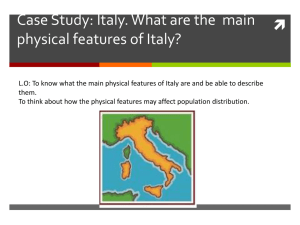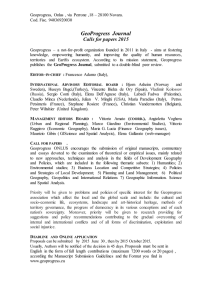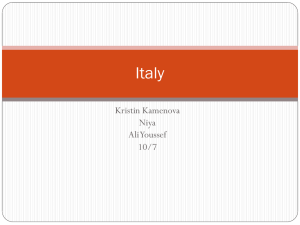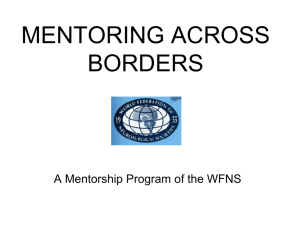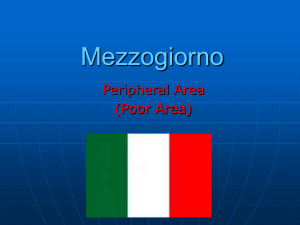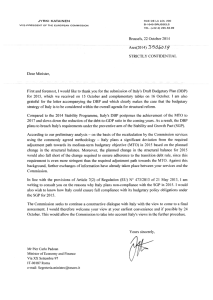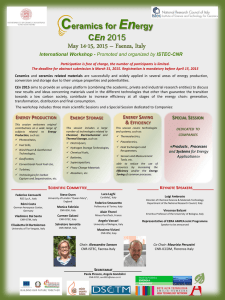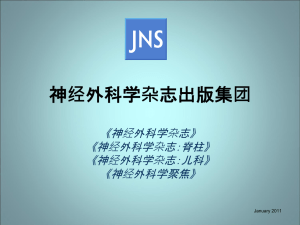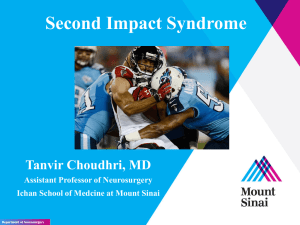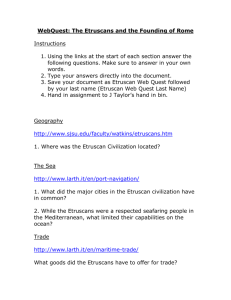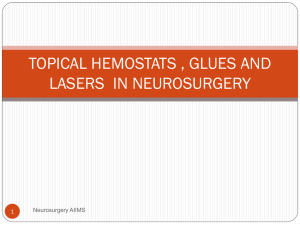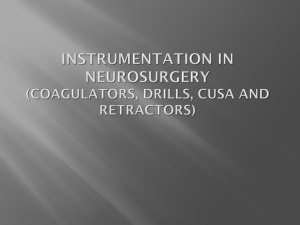IV International Congress of International Society of
advertisement
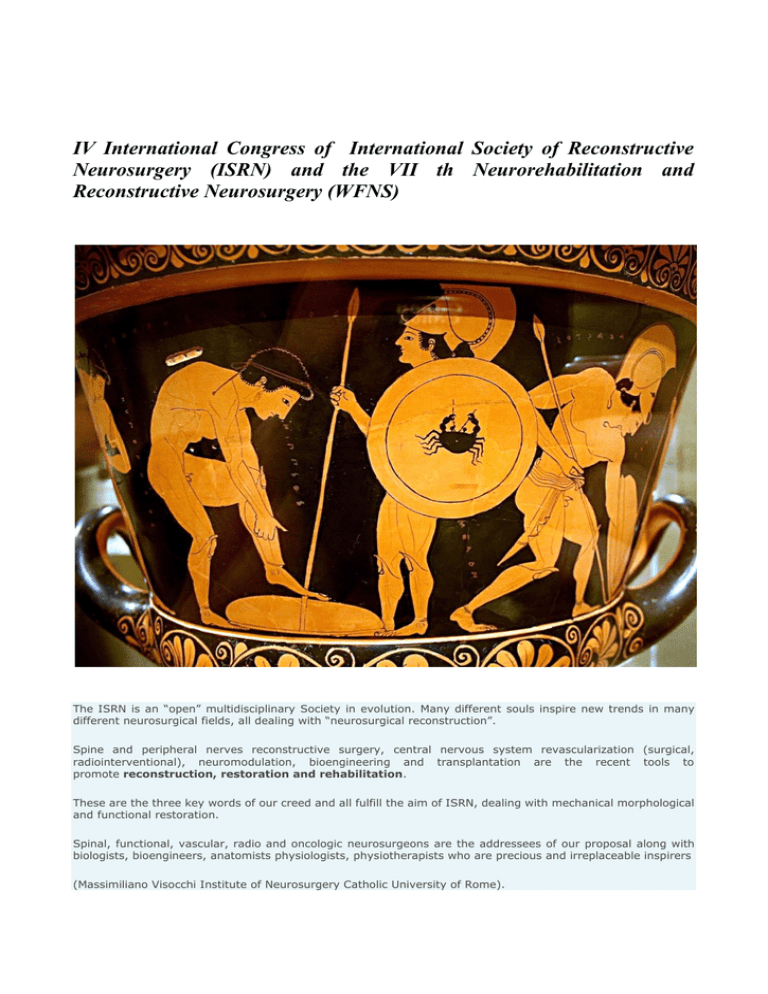
IV International Congress of International Society of Reconstructive Neurosurgery (ISRN) and the VII th Neurorehabilitation and Reconstructive Neurosurgery (WFNS) The ISRN is an “open” multidisciplinary Society in evolution. Many different souls inspire new trends in many different neurosurgical fields, all dealing with “neurosurgical reconstruction”. Spine and peripheral nerves reconstructive surgery, central nervous system revascularization (surgical, radiointerventional), neuromodulation, bioengineering and transplantation are the recent tools to promote reconstruction, restoration and rehabilitation. These are the three key words of our creed and all fulfill the aim of ISRN, dealing with mechanical morphological and functional restoration. Spinal, functional, vascular, radio and oncologic neurosurgeons are the addressees of our proposal along with biologists, bioengineers, anatomists physiologists, physiotherapists who are precious and irreplaceable inspirers (Massimiliano Visocchi Institute of Neurosurgery Catholic University of Rome). 12 – 14 September 2015 Congress President Francesco TOMASELLO (Italy) President of the Scientific, Editorial and Organizing Committee Massimiliano VISOCCHI (Italy) Under the Patronage of the following Societies WFNS Francesco TOMASELLO Vice President (Italy) Concezio DI ROCCO President of the Educational Committe (Germany) Jin Woo CHANG President of the Neurorehabilitation Committee ISRN Maximilian MEDHORN President (Germany) SINCh Alberto DELITALA President (Italy) September the 12th H.7:30- 8:30 AM registration 8:30 OPENING CERIMONY F Tomasello Vice president WFNS (Messina Italy) M Medhorn President ISRN(Hulms Germany) C Di Rocco, President Educational Committee WFNS (Hannover Germany) JW Chang President Neurorehabilitation Committee of the WFNS (Seoul Korea) A Delitala President Italian Society of Neurosurgery (Rome Italy) M Visocchi President of the Scientific, Editorial and Organizing Committee (Rome Italy) Congress Venue Palazzo Ruspoli Piazza S. Maria Cerveteri (Roma) Palazzo Ruspoli Built in 1533, it was incorporated in the city walls when the Orsini rebuilt these. The Ruspoli family later altered it inside and outside. In 1760 Cardinal Acciupidi had a passage built connecting Palazzo Ruspoli to the church of Santa Maria Maggiore. TRIUMPH CONGRESSI Chiara Mastroiacovo (c.mastroiacovo@thetriumph.com) Roma + 39 35530423 + 39 635530404 + 39 635530235 Triumph Congress mobile + 39 3400608986 3470179777 reconstructive2015@thetriumph.com CERVETERI NECROPOLIS The largest Etruscan cemetery reflects different types of burial practices from the 9th to the 1st century BC, and bear witness to the achievements of Etruscan culture. Which over nine centuries developed the earliest urban civilization in the northern Mediterranean. Some of the tombs are monumental, cut in rock and topped by impressive tumuli (burial mounds). Many feature carvings on their walls, others have wall paintings of outstanding quality. The necropolis near Cerveteri, known as Banditaccia, contains thousands of tombs organized in a city-like plan, with streets, small squares and neighbourhoods. The site contains very different types of tombs: trenches cut in rock; tumuli; and some, also carved in rock, in the shape of huts or houses with a wealth of structural details. These provide the only surviving evidence of Etruscan residential architecture

